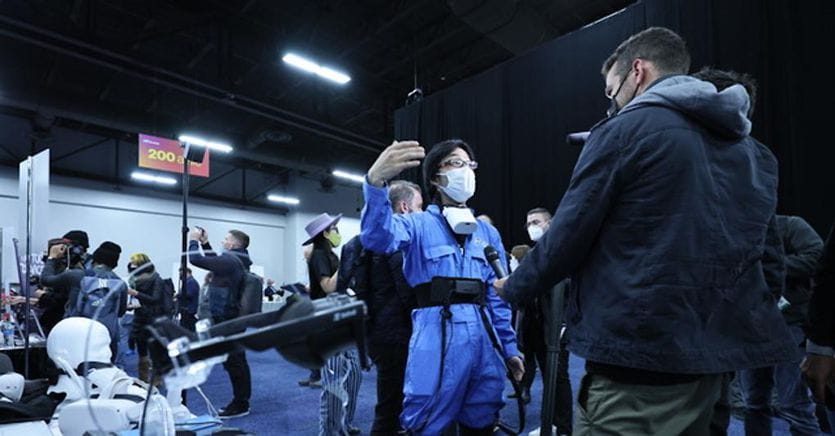There were over 180 thousand visitors to the Consumer Electronics Show in 2019, and more than 7 thousand exhibitors. The one that has just ended in Las Vegas – with about 50 thousand admissions, 2,200 companies and several keynotes in streaming – goes to the archive as a minor edition, with the numerous absences (Microsoft, Google, Lenove, Meta and Amazon among these ) to dampen the enthusiasm of the eve of the eve and to re-propose a theme already debated last year: are events like Ces or Ifa still the occasions in which to fill up on innovation in the tech field? From the Consumer Technology Association they are convinced that “the show must continue”, in presence and virtually, because never before has digital been an integral part of people’s lives and companies’ business. But the real game has been played for some time also on other stages.
In any case, products and gadgets with artificial intelligence of all kinds were admired in the window, from the usual batch of televisions and smart speakers to cars, and it can reasonably be said that with Ces 2022 the he was from the metaverse. Samsung, for example, welcomed visitors to its virtual “My House” to showcase its new appliances and Hyundai did more or less the same by offering the chance to test its new concept cars in cyberspace. If the new all-encompassing online world envisioned by Mark Zuckerberg is still a long way off, a new wave of devices capable of delivering a much more immersive virtual reality experience is on the way. In the coming months, the Oculus Quest 2 of Meta should be added to the glasses for virtual reality from Apple, Google and Microsoft and gadgets landed in Las Vegas such as the Vive Flow dual-screen viewer from Taiwanese HTC, which promises maximum “immersion” in terms of user experience starting from the simultaneous development of software and hardware. In general, we go towards smaller and more elegant devices, and more comfortable to wear such as the wireless wearable vest by the Spanish Owo, which uses haptic technology to provide vibrations that simulate the sensations received by your online avatar.
Another trend that promises to be very hot in the coming months is that of the intelligence of things, a sort of Internet of Thing at the next stage, in which sensors will also be incorporated into everyday objects (beds or bathtubs). and AI will come into play to extract useful information from a person’s behavioral data to improve his mental and physical well-being.
After all, healthcare is a sector in which technology has found considerable room for growth in the last 18 months, with trackers for monitoring health or connected machines for fitness or even health care services accessible in modality. digital and virtual. If the other new entry of this year’s Ces are the Nft and the increasingly disparate applications of non-fungible tokens based on blockchain technology (art, sport, tourism), the quality of work and teaching is another issue that has animated the three days of Las Vegas. In short, let’s get ready for meetings managed by smart devices and more engaging tools for remote collaboration in the sign of maximum interoperability. Companies such as LG, Lenovo, but also Google and others, are also developing products to compete with Meta’s Horizon Workrooms platform and Horizon Worlds social network, while Microsoft is working to add new features to Hololens headsets. One last short reflection dedicated to screens. With the pandemic, the TV has somehow returned to the center of the (smart) home and in Las Vegas 8K technology was celebrated in all its possible variants, from MicroLed and MiniLed backlit panels (among which the 85 Tcl prototype stands out. inches with a thickness of only 3.9 mm) to the new frontier of Quantum Dot Oled (with Sony anticipating everyone with the Bravia AK95 and Samsung immediately behind with its Qd Display) passing through the Laser TVs (Hisense). Incremental innovation, some would say: the epic of 3D TVs, after all, is over immediately and that of 16K displays is still to come.
